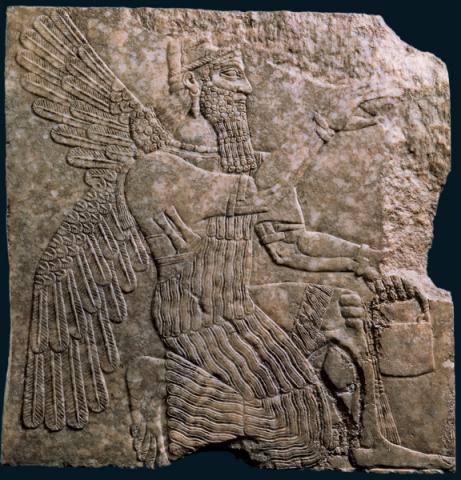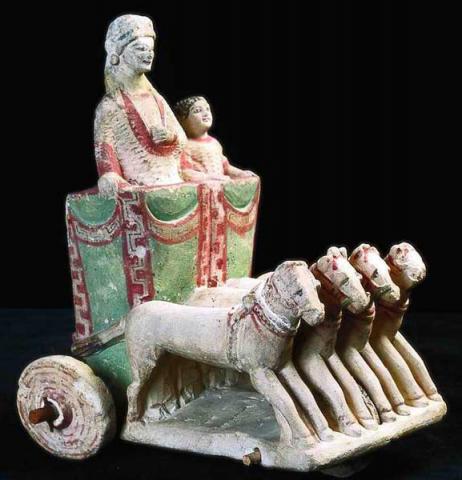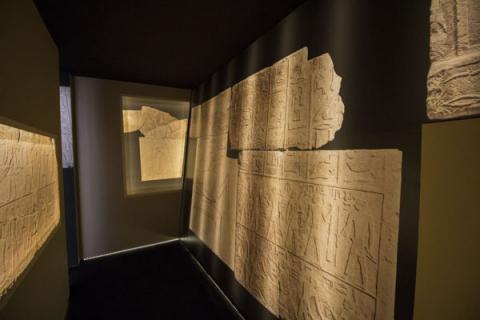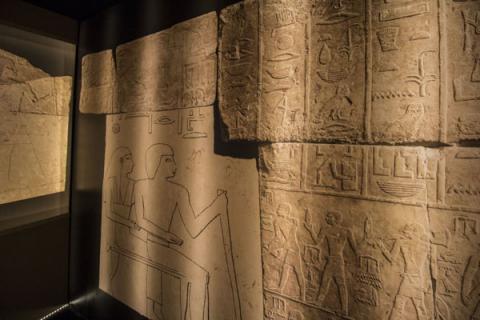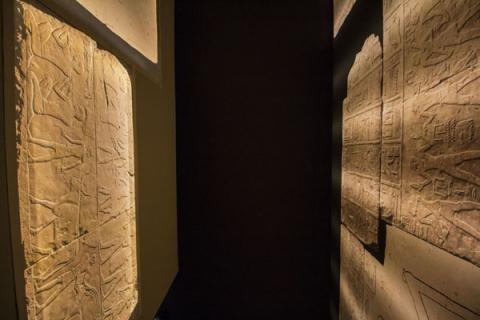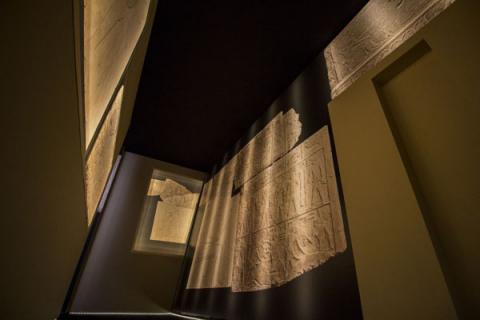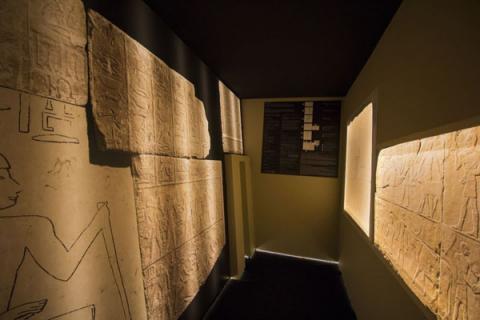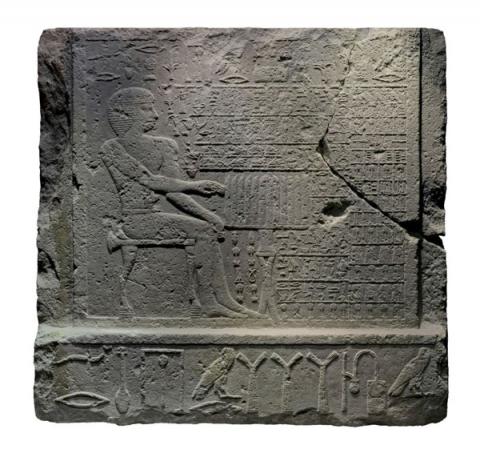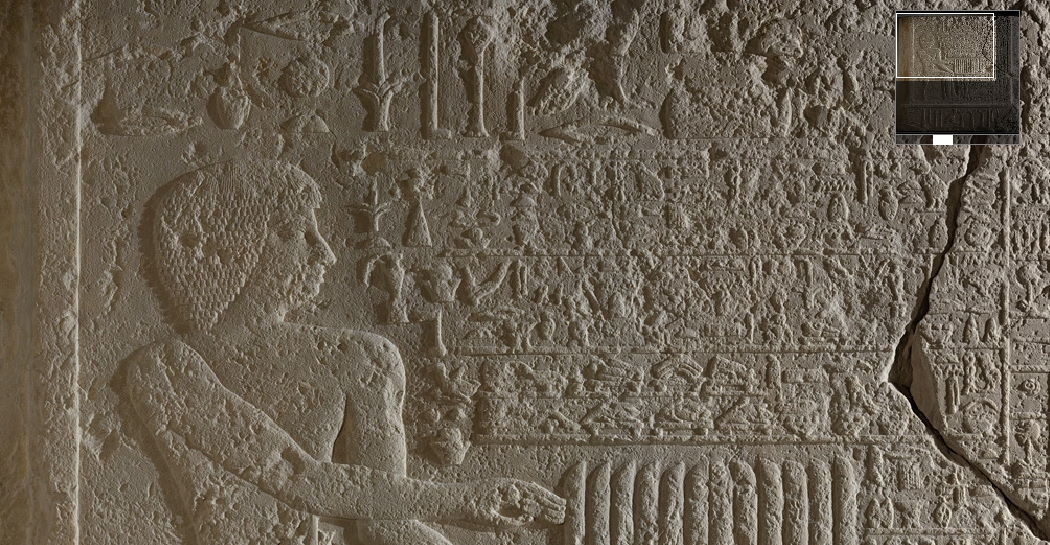In the Shadows of the Pyramids
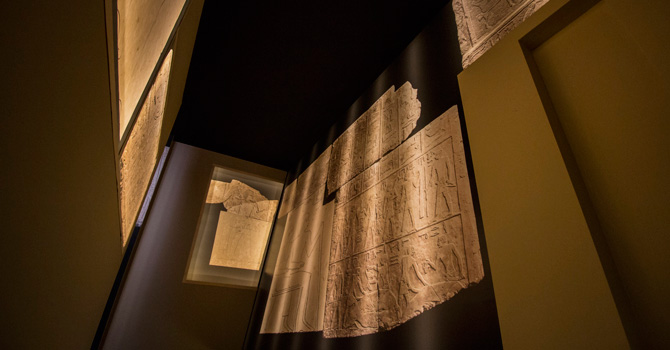
This extraordinary funerary relief pertaining to a dignitary named Nefer dates to the reign of the Pharaoh Cheope. It is a 1:1 scale reconstruction that provides a rich graphic, photographic and multi-medial testament to the detail of the internal space.
The Barracco Museum holds the priceless “stele (marble slab) of the false door” belonging to a dignitary named Nefer who lived in Egypt during the time of the 4th Dynasty (2575-2465 AC) which embraces that of the great Pharaohs who built the pyramids. Given the man’s important position in the royal court –he supervised all the king’s scribes as well as the food storehouses and the armoury, Nefer was awarded the honour of being buried in a mastaba of the royal cemetery beneath the Great Pyramid of Cheope. Mastabas (the word derives from the Arab word meaning bench) are burial structures that characterize the earliest dynasties of the Egyptian civilisation. They are flat-roofed, rectangular structures with inward sloping sides like a pyramid, designed to contain the burial shafts that link the external area with the underground burial chamber containing the sarcophagus of the deceased person and his grave goods.
Nefer chose to add a small burial chapel to the structure, covered in reliefs, and it is this that was reconstructed, to size, at the Barracco Museum.
Pictures that reproduce the reliefs from this tomb, now found in various European and American museums (the Louvre in Paris, Ny Carlsberg Glyptotek in Copenhagen, the Museum of Birmingham, the University of Pennsylvania Museum of Philadelphia and the Museum of Fine Arts in Boston) line the inside of the reconstructed chapel in order to provide a general overview of an Egyptian tomb from the third millennium before Christ.
The exhibition involves a full scale reconstruction of Nefer’s burial chapel in the external loggia on the first floor of the Museum, with back-lit slides set up inside that show the decorative reliefs in their entirety
The stele held by the Barracco Museum was bought by Giovanni Barracco at an auction in Paris in 1868. The event had been organized in order to sell pieces from the collection belonging to Napoléon-Joseph-Charles-Paul Bonaparte, known as Plon Plon, who was the son of the youngest brother of Napoleon I. The Prince had planned an expedition to Egypt for 1858, aiming to follow in the footsteps of Napoleon’s 1798-1801 expedition. Determined to welcome such an illustrious guest in the best way possible, the Governor of Egypt, Said Pacha, decided to “organize” a series of excavations ahead of time so that the Prince could experience the pleasure of “discovering” archaeological treasures from pharaonic Egypt as they emerged, as if by magic, from the desert sands.
To assist in the staging of this scam, the then curator of the Louvre’s Department of Egyptian Antiquities, the famous Egyptologist, August Mariette, was summoned to Egypt in 1857 and it did not take him long to open up and personally oversee up to 35 excavation sites, actively controlling all the important finds that were unearthed. The large quantity of items discovered on these sites was truly impressive in terms of both quantity and quality. The French Prince’s trip was cancelled, but he was still presented with a series of Egyptian treasures, including the Nefer stele that was particularly outstanding. Plon Plon kept all the items he was given inside the sumptuous Maison Pompéienne in Paris that had been inspired by a Pompeian domus. In a moment of political difficulty however, Prince Napoléon sold both his home and his collection and the Nefer stele became the first piece in Giovanni Barracco’s collection.
Information
From December, 30 2016 to September, 17 2017
From October to May:
Tuesday-Sunday: 10:00 – 16:00 (last admission: 15:30);
Closed on Monday and May,1
from June to September:
Tuesday-Sunday: 13:00 - 19:00 pm (last admission: 18:30).
Closed on Monday
Free admission
tel. +39 060608 (daily from 9.00 am to 7.00 pm)
Promoted by
Roma Capitale - Assessorato alla Crescita culturale - Sovrintendenza Capitolina ai Beni Culturali
In cooperation with
MasterCard Priceless Rome
Media partner
Il Messaggero
Organizzazione
Zètema Progetto Cultura




























